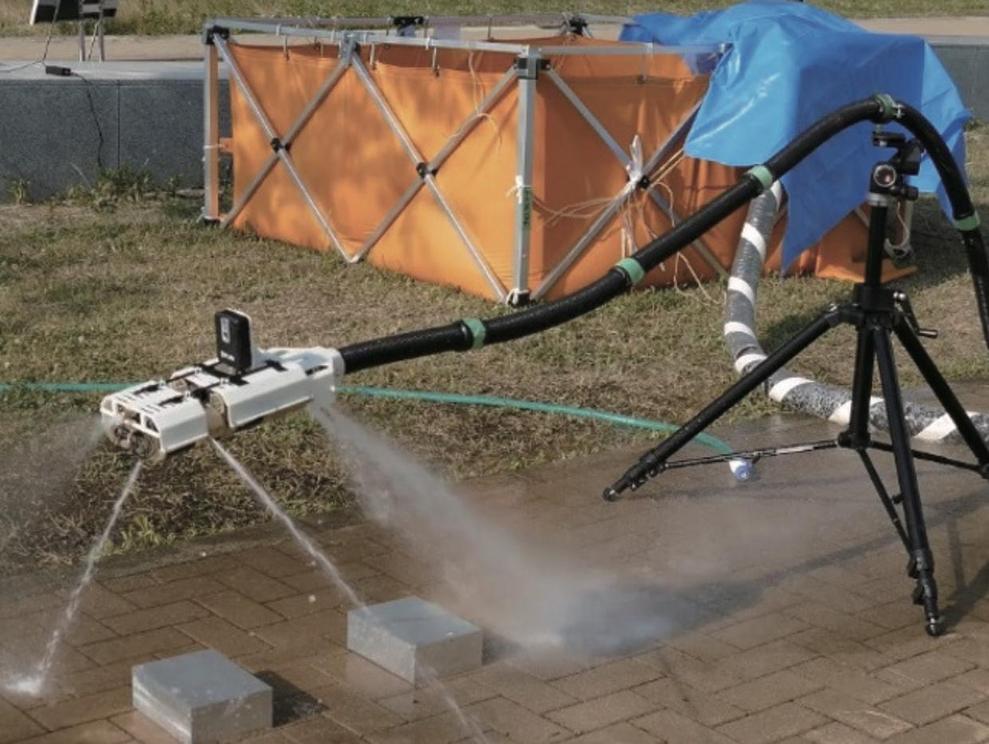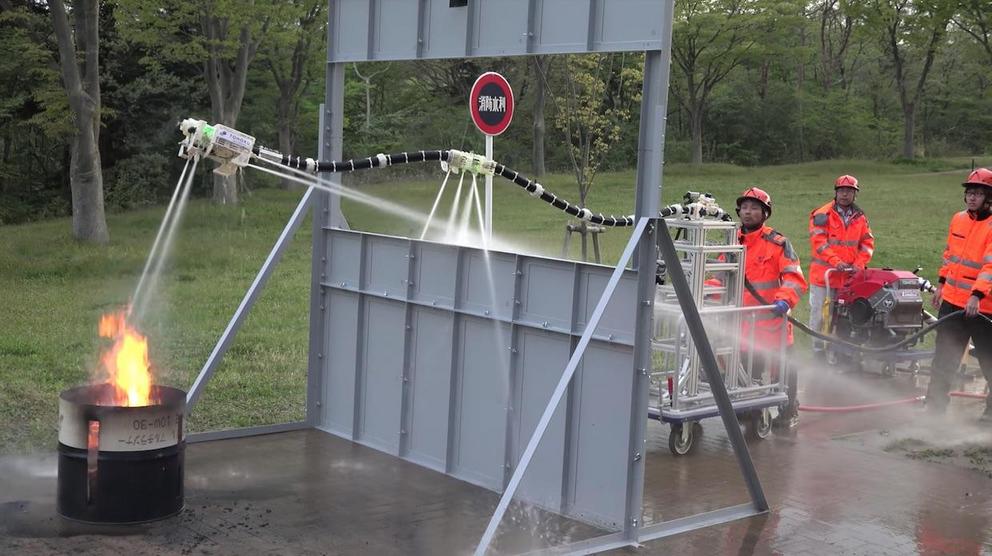Firefighting robot snake flies on jets of water
Using steerable jets of water like rockets, this robot snake can fly into burning buildings to extinguish fires
Fires have an unfortunate habit of happening in places that aren’t necessarily easy to reach. Whether the source of the fire is somewhere deep within a building, or up more than a floor or two, or both, firefighters have few good options for tackling them. They can either pour water into windows (which doesn’t always work that well), or they can try and get into the building, which seems like it’s probably super dangerous.
At the International Conference on Robotics and Automation last month, researchers from Tohoku University and National Institute of Technology, Hachinohe College, in Japan, presented a new kind of snake-like robot with the body of a fire house. Like other snake robots, this one has the potential to be able to wiggle its way into windows or other gaps in a structure, with the benefit of carrying and directing water as it goes. What’s so cool about this particular design, though, is how it powers itself: By firing high pressure jets of water downwards like rocket engines, it can lift itself off of the ground and fly.
What’s happening here might be complex to implement in practice, but in principle, it’s not too complicated: There are sets of steerable nozzle modules distributed along the length of the hose. These modules siphon water out of the high pressure stream inside of the hose, and spray it downwards. As the water exits downwards at high velocity, it pushes the hose upwards, and with enough of these modules squirting out high pressure water, the entire hose can be lifted into the air. Just like a rocket, it’s not dependent on ground proximity to work, so as long as you keep on giving it more hose and water at a high enough pressure, it’ll go as high as you want.

Image: Tohoku University/National Institute of Technology
Since the nozzles are steerable, each module can direct itself independently, letting the hose weave itself through small gaps deep into a structure in order to find the source of a fire. And the “head” module comes with a few extra degrees of freedom to allow the water stream to be directed more precisely. And of course, while the head nozzle is fighting the source of the fire, a byproduct of the body of the house keeping itself airborne is that it’s drenching everything that it’s passing over, while also keeping itself cool.
The 2-meter long prototype in the video above is intended to be a single segment in a robot that can be extended to an arbitrary length by just adding on more segments. A gas engine powered a compressor that provided water at 0.7 MPa. It worked reasonably well, as prototypes go, but it’s really more of a proof of concept in hardware than anything else, and obviously there’s a lot to do before a system like this could be real-world useful. The researchers readily admit that their current control algorithms are “not sophisticated,” and that they’ll need to put some work into making it more stable, more controllable, and able to handle more modules. They’re actively working on it, though, and we’re looking forward to this tech being adapted to garden hoses as well.
“Aerial Hose Type Robot by Water-Jet for Fire Fighting,” by Hisato Ando, Yuichi Ambe, Akihiro Ishii, Masashi Konyo, Kenjiro Tadakuma, Shigenao Maruyama, and Satoshi Tadokoro from Tohoku University and National Institute of Technology, Hachinohe College, Japan, was presented at ICRA 2018 in Brisbane, Australia.
For full references please use source link below.

